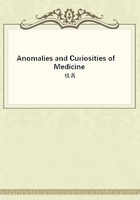
第53章
Brown speaks of a woman of twenty-six who had a call of nature while in bed, and while sitting up she gave birth to a fine, full-grown child, which, falling on the floor, ruptured the funis. She took her child, lay down with it for some time, and feeling easier, hailed a cab, drove to a hospital with the child in her arms, and wanted to walk upstairs. She was put to bed and delivered of the placenta, there being but little hemorrhage from the cord; both she and her child made speedy recoveries. Thebault reports an instance of delivery in the erect position, with rupture of the funis at the placenta. There was recently a rumor, probably a newspaper fabrication, that a woman while at stool in a railway car gave birth to a child which was found alive on the track afterward.
There is a curious instance on record in which a child was born in a hip-bath and narrowly escaped drowning. The mother was a European woman aged forty, who had borne two children, the last nine years before. She was supposed to have dropsy of the abdomen, and among other treatments was the use of a speculum and caustic applications for inflammation of the womb. The escape of watery fluid for two days was considered evidence of the rupture of an ovarian cyst. At the end of two days, severe pains set in, and a warm hip-bath and an opiate were ordered. While in the bath she bore a fully-matured, living, male child, to the great surprise of herself and her friends. The child might have been drowned had not assistance been close at hand.
Birth by the Rectum.--In some cases in which there is some obstacle to the delivery of a child by the natural passages, the efforts of nature to expel the product of conception lead to an anomalous exit. There are some details of births by the rectum mentioned in the last century by Reta and others. Payne cites the instance of a woman of thirty-three, in labor thirty-six hours, in whom there was a congenital absence of the vaginal orifice.
The finger, gliding along the perineum, arrived at a distended anus, just inside of which was felt a fetal head. He anesthetized the patient and delivered the child with forceps, and without perineal rupture. There was little hemorrhage, and the placenta was removed with slight difficulty. Five months later, Payne found an unaltered condition of the perineum and vicinity; there was absence of the vaginal orifice, and, on introducing the finger along the anterior wall of the rectum, a fistula was found, communicating with the vagina; above this point the arrangement and the situation of the parts were normal. The woman had given birth to three still-born children, and always menstruated easily. Coitus always seemed satisfactory, and no suspicion existed in the patient's mind, and had never been suggested to her, of her abnormality.
Harrison saw a fetus delivered by the anus after rupture of the uterus; the membranes came away by the same route. In this case the neck of the uterus was cartilaginous and firmly adherent to the adjacent parts. In seven days after the accouchement the woman had completely regained her health. Vallisneri reports the instance of a woman who possessed two uteruses, one communicating with the vagina, the other with the rectum. She had permitted rectal copulation and had become impregnated in this manner.
Louis, the celebrated French surgeon, created a furore by a pamphlet entitled "De partium externarum generationi inservientium in mulieribus naturali vitiosa et morbosa dispositione, etc.," for which he was punished by the Sorbonne, but absolved by the Pope. He described a young lady who had no vaginal opening, but who regularly menstruated by the rectum. She allowed her lover to have connection with her in the only possible way, by the rectum, which, however, sufficed for impregnation, and at term she bore by the rectum a well-formed child. Hunter speaks of a case of pregnancy in a woman with a double vagina, who was delivered at the seventh month by the rectum. Mekeln and Andrews give instances of parturition through the anus. Morisani describes a case of extrauterine pregnancy with tubal rupture and discharge into the culdesac, in which there was delivery by the rectum. After an attack of severe abdominal pain, followed by hemorrhage, the woman experienced an urgent desire to empty the rectum. The fetal movements ceased, and a recurrence of these symptoms led the patient to go to stool, at which she passed blood and a seromucoid fluid. She attempted manually to remove the offending substances from the rectum, and in consequence grasped the leg of a fetus. She was removed to a hospital, where a fetus nine inches long was removed from the rectum. The rectal opening gradually cicatrized, the sac became obliterated, and the woman left the hospital well.
Birth Through Perineal Perforation.--Occasionally there is perineal perforation during labor, with birth of the child through the opening. Brown mentions a case of rupture of the perineum with birth of a child between the vaginal opening and the anus. Cassidy reports a case of child-birth through the perineum. A successful operation was performed fifteen days after the accident. Dupuytren speaks of the passage of an infant through a central opening of the perineum. Capuron, Gravis, and Lebrun all report accouchement through a perineal perforation, without alteration in the sphincter ani or the fourchet. In his "Diseases of Women" Simpson speaks of a fistula left by the passage of an infant through the perineum. Wilson, Toloshinoff, Stolz, Argles, Demarquay, Harley, Hernu, Martyn, Lamb, Morere, Pollock, and others record the birth of children through perineal perforations.